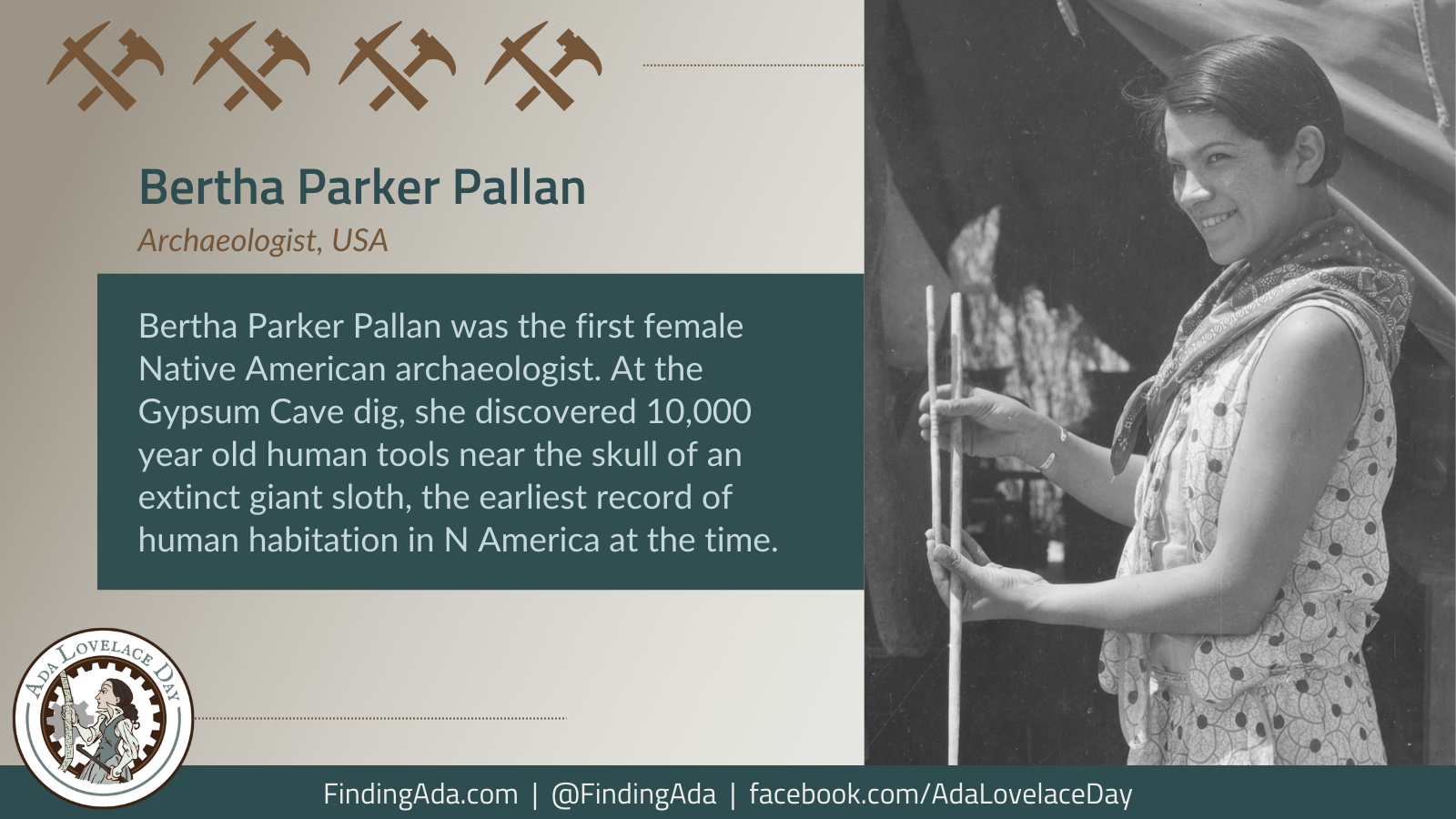
Bertha Parker Pallan
Bertha Yeawas “Birdie” Parker Pallan was the first female Native American archaeologist.
Parker Pallan was born in 1907 to Beulah Tahamont, an Abenaki actress, and Arthur C Parker, an archaeologist and anthropologist who belonged to the Seneca tribe. It is said that she was born in a tent at one of her father’s digs. Although she accompanied her father to excavations, her early introduction to archaeology ended when her parents divorced in 1914.
After being rescued from an abusive marriage by her uncle, Mark Raymond Harrington, she joined him at an archaeological dig that he was directing at Mesa House in Nevada. He hired her as a cook and expedition secretary, and she rapidly learnt excavation techniques. In 1929, she discovered the pueblo site of Scorpion Hill, which she excavated and documented on her own. Her finds were displayed at the Southwest Museum, now the Autry Museum of the American West.
The following year, she worked at the Gypsum Cave excavation, located in the desert outside Las Vegas, although she became ill after exposure to large amounts of cave guano. Parker Pallan’s work involved cleaning, repairing and cataloguing finds, but in her spare time she explored the caves. Because of her petite stature, she was able to squeeze through small gaps into caves that were inaccessible to the rest of the team.
In one of these caves, she discovered 10,000 year old human tools alongside the skull of an extinct giant ground sloth, Nothrotherium shastense. This was the earliest record of human habitation in North America at the time, and was described as “the most outstanding anthropological find ever made in the United States.” It was also a find that attracted further institutional support for the expedition.
From 1931 to 1941, Parker Pallan worked for the Southwest Museum as an assistant in archaeology and ethnology, publishing a number of papers based on her research. She was also able to document the culture, traditions, history, and folklore of a number of Indigenous peoples, including the Maidu, Paiute, Pomo, and the Yurok tribes.
Her third marriage, to actor Iron Eyes Cody, led her to co-host a TV program on Native American history and folklore, as well as act and work as a consultant on Indigenous representation in Hollywood, advocating for and supporting Indigenous actors.
In 2020, the Society for American Archaeology created a scholarship in her name. The Bertha Parker Cody Award for Native American Women is awarded to Native American, Native Alaskans, and Hawaiian women who are undergraduate or graduate students in the fields of archaeology or museum studies.
Further Reading
- Bertha Parker Pallan, Wikipedia
- Bertha “Birdie” Parker, Suzie Birch, Trowelblazers, 8 May 2014
- Bertha Parker, the trailblazing first Indigenous North American archaeologist, taught herself how to excavate a site, Ashley Marranzino, Massive Science, 6 June 2019
- New Award Honors Bertha Parker Cody, First U.S. Native American Woman Archaeologist, Society for American Archaeology, 16 November 2020
- Bertha “Birdie” Yewas Parker, Lauren Rosenbaum, Museum of Native American History, 1 March 2021